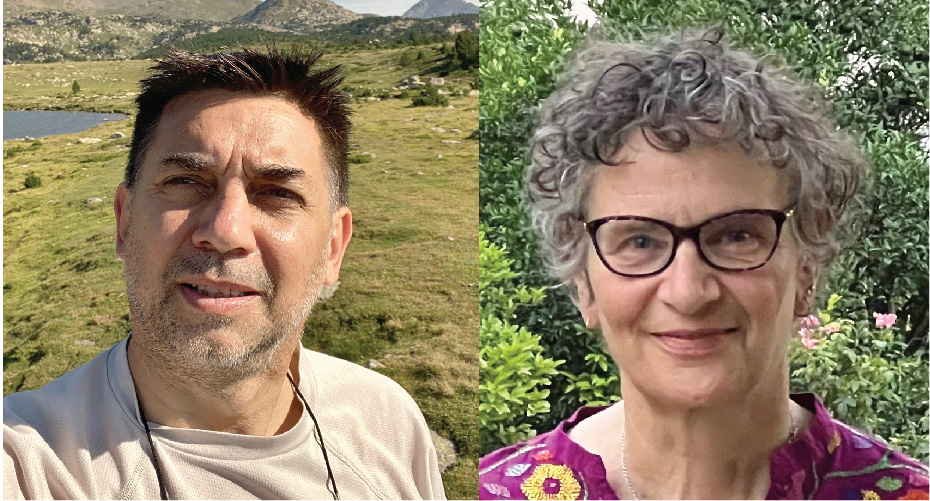Listen here on Spotify | Listen here on Apple Podcast
Episode recorded July 26, 2023
Episode released on November 16, 2023

Francois Bertone and Lucy Lytton are Senior Groundwater Specialists for the Water Global Practice at the World Bank.
Highlights | Transcript
- World Bank Group funds countries through the Ministries of Finance. annually. Groundwater is a component of larger projects, mostly not tagged separately.
- World Bank Group is a family of five international organizations that make loans to developing countries. The term World Bank often refers to two out of the five organizations: International Bank for Reconstruction and Development (IBRD), the International Development Association (IDA). The World Bank provided over $100 Billion in loans in 2022 and disbursed $67 billion this same year.
- World Bank goals: ending extreme poverty and building shared prosperity.
- One of the main drivers of the report titled The Hidden Wealth of Nations, The Economics of Groundwater in Times of Climate Change was to evaluate the role of groundwater access in ending poverty and enhancing economic growth. The report provides the numbers to support the importance of groundwater to development.
- Groundwater
- accounts for 49% of all water withdrawn for domestic use globally,
- represents 43% of all water used for irrigation globally, and
- buffers economic losses linked to drought by a third.
- An estimated 92% of transboundary aquifers in Middle East and South Asia show signs of depletion.
- Aquifers in Sub-Saharan Africa are underutilized and could partially alleviate poverty for ~250 million people in this region.
- Groundwater provides buffer against climate extremes (droughts/floods)/change if not overexploited. Access to groundwater
- mitigates half of the losses in agricultural yield caused by droughts
- reduces stunting in children under 5 from 23% to 8%
- One of key issues addressed in The Hidden Wealth of Nations report include:
- Is groundwater accessible…to the poorest, regionally or locally?
- Aquifer typologies can help understand how they function:
- Major alluvial aquifers --- similar to bathtubs, large storage, readily accessible, slow to deplete (e.g., IndoGangetic Plain)
- Local shallow aquifers --- like egg cartons, often weathered rock over basement, generally shallow (≤ 50 m), readily accessible in limited quantities, low storage, rapid depletion and recharge, mostly self-regulating.
- Complex aquifer systems ---large, often multi-layered, aquifers in consolidated or unconsolidated geologic formations, often confined, accessible via deep and complex boreholes.
- Karstic aquifers ---large conduits or caves, requires institutional exploration, boreholes can be 100s m deep.
- Previous global maps of aquifers were developed mostly for hydrogeologists (e.g., BGR WHYMAP)
- World Bank has had groundwater as a component of large projects for decades but has not tracked these separately. Groundwater projects less visible than surface water projects.
- Examples of groundwater projects;
- The Atal Bhujal Yojana project (National Groundwater Management Improvement Project) (2020, $450 million) covers seven states (Gujarat, Maharashtra, Haryana, Karnataka, Rajasthan, Madhya Pradesh, and Uttar Pradesh), alluvial aquifers (IndoGangetic Plain) and hard rock aquifers of peninsular India. Project will enhance recharge, reduce demand, align cropping, and promote sustainable groundwater management.
- Groundwater for Resilience project in the Horn of Africa ($385 Million). Huge drought last few years linked to La Nina conditions.
- West Bengal: minor irrigation project ($150 million) to increase food security for ~ 1 billion people.
- Water quality is also a critical issue, including salinity related to irrigation, nitrate fertilizers, geogenic contaminants (arsenic, fluoride, uranium, manganese).
- Bangladesh is a famous example: switch from surface water affecting people with waterborne diseases to groundwater with chronic arsenic exposure.
- Energy management should consider groundwater impacts, e.g., replacement of diesel with solar pumps may result in groundwater overexploitation.
- World Bank also promotes Farmer Led Irrigation Development (FLID). Most farmers in Africa and South Asia are small holder farmers.
- Small shallow aquifers in Sub-Saharan Africa (egg cartons) self-regulating, dynamic, can deplete but recharge rapidly, can be managed locally.
- Underutilization of groundwater in Sub-Saharan Africa (SSA) may be partially explained by 3× higher cost of wells in SSA than in India.
- Optimistic for the future: national capacity for groundwater management, provides a buffer against climate extremes, enhances food security, reduces poverty and increases economic development.



